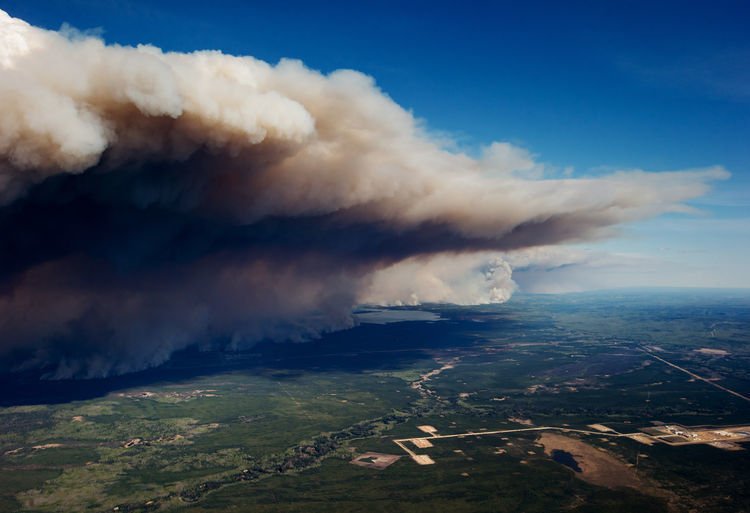
Alberta firefighters successfully defended Suncor Energy and Syncrude Canada oil-sands sites from wildfires as rain brought some relief and the blaze that shut more than a million barrels a day of production in Canada’s oil patch expanded in other directions.
The fire, which has doubled to an area more than five times bigger than New York City in about a week, burned up to and around the companies’ oil-sands mines and is now spreading east into remote forests of neighboring Saskatchewan, said Chad Morrison, an Alberta fire official.
Firefighters were helped by “a trace” of rain Thursday morning with more showers forecast for the coming days. The blaze, which erupted at the beginning of the month, burned entire neighborhoods in Fort McMurray and forced the evacuation of more than 80,000 people from the town that serves as the industry’s operational hub.
“The threat has diminished around the community and the oil-sands facilities for sure,” Morrison said at a briefing with reporters.
The respite renews the prospects for a restart of operations after higher temperatures and winds had sent the blaze back to the heart of the oil-sands earlier this week, forcing the evacuation of 8,000 workers from camps north of Fort McMurray just as Suncor was preparing to resume production. The provincial government on Wednesday announced plans for a phased reentry of residents who wish to go back over four days starting on June 1.
There has been no additional damage to any energy industry facilities, including work camps. While the fire that has grown to about 5,000 square kilometers (1,930 square miles) is still heading northeast in the vicinity of oil-sands plants, it’s expected to shift course and burn back on itself toward the southwest, Travis Fairweather, an Alberta Forestry spokesman, said by phone.
The delays resuming production in the oil sands, which contain the world’s third-largest reserves, helped push crude to a seven-month high.
West Texas Intermediate touched $48.95 a barrel Wednesday in New York, the highest since October. WTI fell 3 cents to $48.16 a barrel in New York Thursday.
The fire is a setback for Canada’s economy and is estimated to be the country’s costliest disaster. The Conference Board of Canada forecasts that 14 days of production cuts in the oil sands represent a hit of about C$985 million ($763 million) to the Alberta economy.
Rain is expected to continue through Sunday, according to government weather forecasts. There are more than 2,400 firefighters battling fires across Alberta, including the blaze around Fort McMurray, Danielle Larivee, Alberta’s municipal affairs minister, said in the Thursday press conference from Edmonton.
Oil-sands plants including some of the largest operated by Syncrude and Suncor came offline as companies evacuated workers and shut down power lines and pipelines.
Some, including Canadian Natural Resources Ltd.’s Horizon project, were far away from fires and could continue producing during the crisis. Others that were initially affected are now ramping up output, including Royal Dutch Shell Plc’s Albian Sands mine and Imperial Oil Ltd.’s Kearl mine.
Kearl has resumed limited operations, though a full restoration of production depends on a number of factors, Imperial said Thursday.
Facilities still at risk from the flames on Thursday including 19 work camps and Syncrude’s Mildred Lake mine remained under a mandatory evacuation ordered by the province.
The government initially allowed oil-sands companies to use their own emergency response procedures to determine whether workers should leave and then made evacuation orders mandatory for some facilities after the threat returned, Larivee said at the news briefing Thursday.
“We never actually required them to leave until earlier this week,” Larivee said. “This fire is very volatile, the behavior is unpredictable.”